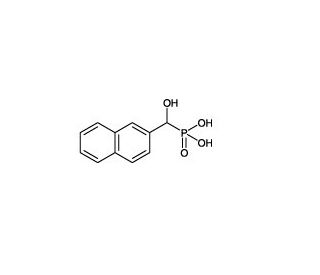

HNMPA (CAS 120943-99-9)
See product citations (11)
QUICK LINKS
HNMPA is a biochemical tool used to inhibit insulin receptor tyrosine kinase in research applications, providing insights into the complex signaling mechanisms governing glucose metabolism and energy homeostasis. By targeting this kinase, HNMPA helps to dissect the molecular underpinnings of insulin resistance, a key aspect of type 2 diabetes research. Its selective inhibition of the insulin receptor allows for detailed studies of the receptor′s autophosphorylation and substrate interactions, thereby enhancing our understanding of its specific contribution to cellular signaling pathways. The use of HNMPA in research elucidates the nuanced roles of tyrosine kinase activity in metabolic regulation and the cellular response to insulin, marking its significance in the study of metabolic disorders.
HNMPA (CAS 120943-99-9) References
- Catalysis of serine and tyrosine autophosphorylation by the human insulin receptor. | Baltensperger, K., et al. 1992. Proc Natl Acad Sci U S A. 89: 7885-9. PMID: 1381504
- Notch signalling suppresses apoptosis in adult human and mouse pancreatic islet cells. | Dror, V., et al. 2007. Diabetologia. 50: 2504-15. PMID: 17922104
- In vivo electrophysiological effects of insulin in the rat brain. | Kovacs, P. and Hajnal, A. 2009. Neuropeptides. 43: 283-93. PMID: 19541365
- Insulin contributes to fine-tuning of the pancreatic beta-cell response to glucagon-like peptide-1. | Moon, MJ., et al. 2011. Mol Cells. 32: 389-95. PMID: 21904878
- Visfatin/NAMPT: a multifaceted molecule with diverse roles in physiology and pathophysiology. | Dahl, TB., et al. 2012. Annu Rev Nutr. 32: 229-43. PMID: 22462624
- Design of a selective insulin receptor tyrosine kinase inhibitor and its effect on glucose uptake and metabolism in intact cells. | Saperstein, R., et al. 1989. Biochemistry. 28: 5694-701. PMID: 2550060
- Activation of sphingosine kinase 2 by endoplasmic reticulum stress ameliorates hepatic steatosis and insulin resistance in mice. | Lee, SY., et al. 2015. Hepatology. 62: 135-46. PMID: 25808625
- Nephrin Contributes to Insulin Secretion and Affects Mammalian Target of Rapamycin Signaling Independently of Insulin Receptor. | Villarreal, R., et al. 2016. J Am Soc Nephrol. 27: 1029-41. PMID: 26400569
- Neuritin Enhances Synaptic Transmission in Medial Prefrontal Cortex in Mice by Increasing CaV3.3 Surface Expression. | Lu, JM., et al. 2017. Cereb Cortex. 27: 3842-3855. PMID: 28475719
- Protein kinase- and lipase inhibitors of inositide metabolism deplete IP7 indirectly in pancreatic β-cells: Off-target effects on cellular bioenergetics and direct effects on IP6K activity. | Rajasekaran, SS., et al. 2018. Cell Signal. 42: 127-133. PMID: 29042286
- Distinct roles of systemic and local actions of insulin on pancreatic β-cells. | Kitamoto, T., et al. 2018. Metabolism. 82: 100-110. PMID: 29320716
- Identification of Two Kinase Inhibitors with Synergistic Toxicity with Low-Dose Hydrogen Peroxide in Colorectal Cancer Cells in vitro. | Freund, E., et al. 2020. Cancers (Basel). 12: PMID: 31906582
- Insulin Bidirectionally Alters NAc Glutamatergic Transmission: Interactions between Insulin Receptor Activation, Endogenous Opioids, and Glutamate Release. | Fetterly, TL., et al. 2021. J Neurosci. 41: 2360-2372. PMID: 33514676
Ordering Information
| Product Name | Catalog # | UNIT | Price | Qty | FAVORITES | |
HNMPA, 5 mg | sc-205714 | 5 mg | $97.00 | |||
HNMPA, 25 mg | sc-205714A | 25 mg | $386.00 |
